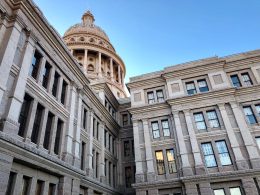Introduction
Infrastructure modernization is a critical aspect of building sustainable communities. It involves upgrading and improving existing infrastructure to meet the needs of the present and future generations. The government plays a crucial role in infrastructure modernization, as it is responsible for funding, planning, and implementing infrastructure projects. In this article, we will explore how the government can build sustainable communities through infrastructure modernization.
Investing in Infrastructure
One of the primary ways the government can build sustainable communities is by investing in infrastructure. This includes funding projects that improve transportation, water supply, energy, and communication systems. By investing in infrastructure, the government can create jobs, boost economic growth, and improve the quality of life for citizens. Additionally, modernizing infrastructure can reduce the environmental impact of existing systems, making them more sustainable.
Planning for the Future
Another critical aspect of building sustainable communities through infrastructure modernization is planning for the future. The government must consider the long-term impact of infrastructure projects and ensure that they are designed to meet the needs of future generations. This includes incorporating sustainable practices into infrastructure design, such as using renewable energy sources and reducing waste. By planning for the future, the government can ensure that infrastructure projects are sustainable and contribute to the overall well-being of the community.
Collaboration and Partnerships
Building sustainable communities through infrastructure modernization requires collaboration and partnerships between the government, private sector, and community organizations. The government can work with private companies to fund and implement infrastructure projects, while community organizations can provide input and feedback on the design and implementation of these projects. By working together, these groups can ensure that infrastructure projects are sustainable, meet the needs of the community, and are implemented in a timely and cost-effective manner.
Public Education and Outreach
Finally, building sustainable communities through infrastructure modernization requires public education and outreach. The government must educate citizens about the importance of infrastructure modernization and how it can benefit the community. This includes providing information about the environmental and economic benefits of sustainable infrastructure, as well as the potential risks and challenges associated with these projects. By engaging with the public and providing information, the government can build support for infrastructure modernization and ensure that projects are implemented successfully.
Conclusion
Infrastructure modernization is a critical aspect of building sustainable communities. The government plays a crucial role in funding, planning, and implementing infrastructure projects that meet the needs of the present and future generations. By investing in infrastructure, planning for the future, collaborating with partners, and educating the public, the government can build sustainable communities that are resilient, prosperous, and environmentally friendly.












